MXA’S 85cc SHOOTOUT: TC85 vs. KX85 vs. 85SX vs. YZ85
We should be upfront. MXA has not focused its attention on mini cycles for many years—even decades. Why? The “Big Five” manufacturers had long neglected their mini cycles. It’s one thing to hit the R&D pause button for a year or two, but it’s another to regurgitate a bike that hadn’t seen revisions since George W. Bush was in the Oval Office. The MXA gang believed that there wasn’t any sense wasting space in the magazine on a group of bikes that were 10 to 20 years old. Magazine space is a valuable commodity, and if the manufacturers didn’t care about their 85cc motocross bikes, why should we?
So, what changed our minds? Why have we suddenly decided to delve back into the wild world of 85cc two-strokes after such a long hiatus? You can thank Kawasaki and KTM for the resurgence in our interest. Our decision was spurred on by Kawasaki’s 2014 KX85, KTM’s continued advancement with the powerful 85SX, and the sudden arrival of Husqvarna on the scene. Suddenly, there was chum in the water—and we rose to take the bait.
In preparation for the resurgence of the minis, MXA began collecting a contingent of skilled mini cycle riders. We groomed them to become MXA test riders. Yes, their eyes did glaze over every time we explained the relationship between head angle, trail, offset, front center and wheelbase, but that’s to be expected. And what kid wouldn’t want a chance to ride brand-new bikes for free?
Our selected group of mini cycle test riders ranged from 10 to 15 years old. They were as short as 4 foot 7 and as tall as 5 foot 4. Skill levels ranged from local Amateur to top-tier National Expert. During our shootout, the four testers were able to make any changes they wanted to each bike, just as long as aftermarket modifications weren’t added. They could spin as many laps as they wanted. At the end of testing, they were asked to rate each bike in a variety of categories and pick an overall winner. Interestingly, their results were congruent.
We feel compelled to explain why the Honda CRF150R and Suzuki RM85 aren’t included in MXA’s 85cc two-stroke shootout. The CRF150R, which has been on the market since 2007, is considered a Super Mini and isn’t eligible for 85cc competition at the AMA level. As for the Suzuki RM85, it is still available to the public, but is sold as a 2012 model, which means that Suzuki has all but given up hope in the 85cc two-stroke market. Evidently, their sole interest is in clearing out their 2012 RM85 inventory.
Without further ado, read on to find out how the Kawasaki KX85, KTM 85SX, Yamaha YZ85 and Husqvarna TC85 fared on the motocross playground. Note that the winning steed might not be the best choice for your particular Ryan Villopoto Junior, but each bike has its charms, as well as its warts. Choose wisely.

FOURTH PLACE: YAMAHA YZ85
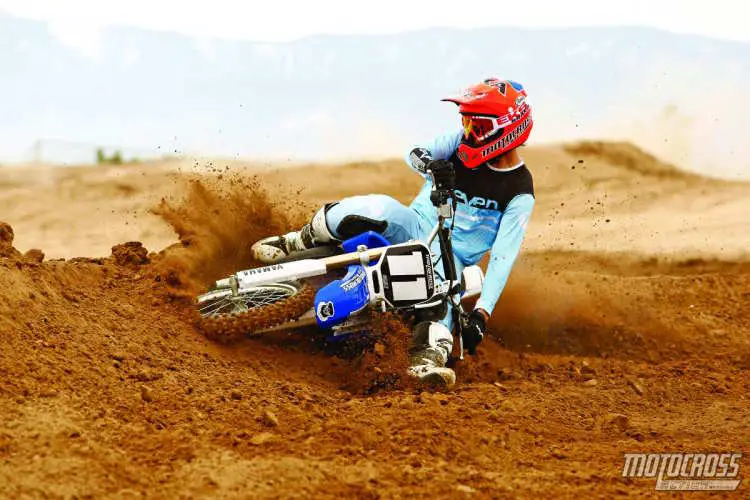
The Yamaha YZ85 is a throwback to the old-school way of building mini cycles—and that is understandable, because this bike’s development cycle dates back quite a few years.
WHAT WAS GOOD? The Yamaha YZ85 has sound handling and comfortable ergonomics. Our test riders immediately felt at home on the bike—that is, those who could touch the ground. With a seat height of 34 inches tall, the YZ85 is too tall for many younger 85cc riders. Even so, the YZ85 is a pleasant bike to ride. Another bright spot is that the YZ85 is the least expensive bike in the class. It retails for $3990. The engine works best in the midrange. We had to short-shift to stay in the meat of the powerband, which catered to Novice-level riders.
WHAT WAS BAD? It’s not nice to kick a dog while it’s down, but we must be realistic. The current iteration of the Yamaha YZ85 should be put out to pasture. Yamaha needs to reinvest in its 85cc two-stroke program. The 2014 YZ85 is two horsepower off the KX85 and nearly four ponies down on the KTM and Husqvarna. It also comes with old technology that has been surpassed by the other brands. Simply put, the YZ85 is a tired design.
WHAT’S THE FINAL WORD? The Yamaha YZ85 is a prime example of what happens when a manufacturer becomes complacent about research and development. Don’t get us wrong, the YZ85 is more than capable of winning races; however, it would take a supremely talented rider to pull it off. Fortunately, there are a host of aftermarket companies that have the YZ85 dialed. It shouldn’t be difficult to put more pep in the YZ85’s step.
THIRD PLACE: KAWASAKI KX85
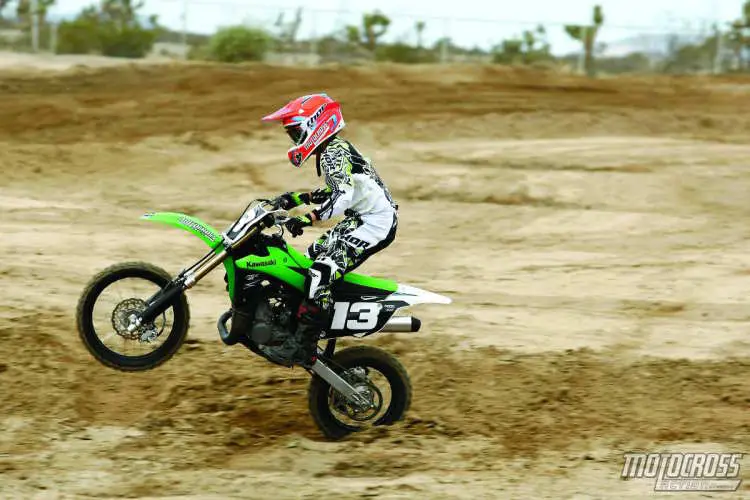
With Suzuki unloading non-currents and Honda out of the 85cc two-stroke business, it is refreshing to see Kawasaki up the ante in the mini cycle marketplace. The all-new Kawasaki KX85 was a long time coming, but we’re glad it made it to the party.
WHAT WAS GOOD? For starters, Kawasaki pumped money into developing the 2014 KX85. It was about time. The new model is far better than its predecessor in every way. Our mini cycle test riders raved about the balanced chassis feel, forgiving suspension, crisp jetting and four-way adjustable bar mounts. Even though they detested the handlebar bend, the KX85 ergonomics were a fan favorite. Also interesting is that the mini groms preferred the Kawasaki brakes over the more powerful Husqvarna and KTM units. Why? Younger riders don’t like a front brake that is sensitive and unforgiving. The KX85 brakes were like baby bear’s porridge. As for the powerband, it did a crackerjack job of catering to a wide range of skill levels. It can overpower the KTM/Husqvarna on the bottom end and keep up through the midrange. It falls short at high rpm (10,000 to 12,000), but it is a race rocket in the hands of most riders.
WHAT WAS BAD? Kawasaki made a host of improvements to the KX85, but they failed to fully commit. How so? The Kayaba forks don’t have adjustable rebound. It was a cost-versus-benefit decision that didn’t make sense. The KX85 won the suspension category, but that’s because it’s up against stiff WP forks and archaic YZ85 units. Imagine how good the KX85 forks would be with rebound adjustment. Also, every tester complained about how bad the handlebars were. The sweep was rolled back too much. It’s also important to note that the faster the rider, the more he wanted improved top-end power.
WHAT’S THE FINAL WORD? Three out of four MXA testers chose the Husqvarna and KTM over the Kawasaki KX85 for one reason—horsepower. They were willing to adjust to the shortcomings of the TC85 and 85SX (suspension and handling) to get their hands on that amazing engine. That doesn’t mean that every test rider drank the orange Kool-Aid, though, because a small minority voted for the KX85 because of its usable powerband, plush suspension, smaller ergonomics, metered front brake and four-position bar mounts. The KX85 is a sweet ride that’s a few horsepower short of taking the cake.
SECOND PLACE: KTM 85SX
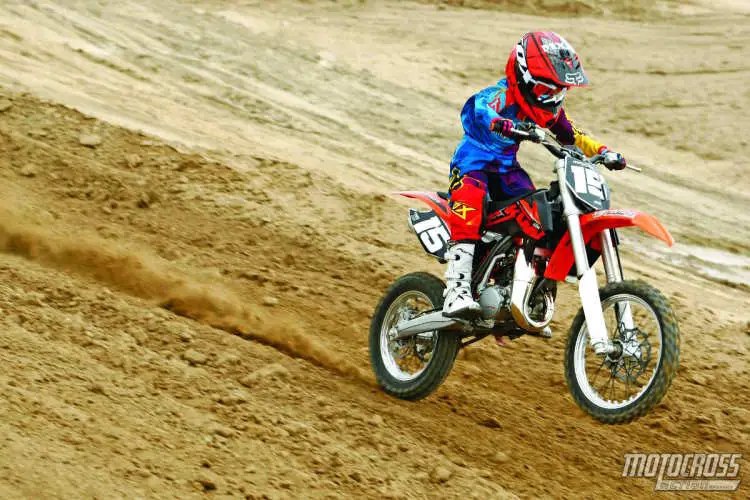
Of all the mini cycle manufacturers, KTM has put the most effort and R&D into the 85cc market over the last five years. KTM has not rested on its laurels.
WHAT WAS GOOD? There weren’t many things that our testers didn’t like about the KTM 85SX. As with the Husqvarna TC85 engine, our crew was over the moon about the broad and usable 85SX powerplant. Riding the KTM effectively required judicious use of the hydraulic clutch at low rpm, but the powerband was forgiving once the revs climbed. There were other areas that drew praise as well: shifting, clutch, braking and overall balance.
WHAT WAS BAD? We encountered a shock failure on the day of our shootout. Dirt penetrated the shock and wreaked havoc on the valving. Fortunately, the problem was easily and quickly solved by KTM, but it was still disappointing. Even so, understand that the KTM 85SX shock is the same one that’s on the Husqvarna TC85. One doesn’t perform better than the other. We chalked the 85SX shock failure up to a fluke; however, there are real-world complaints with the KTM. The brakes are too touchy for Junior. The tall seat height is intimidating for shorter riders. And, the retail price ($5349) is a tough pill to swallow for a family on a budget.
WHAT’S THE FINAL WORD? KTM has done a masterful job of making improvements to their mini cycle line. In fact, they even sell a limited-edition 85SXS, which has an advanced ignition and FMF exhaust, yet is eligible for the stock class. KTM executives won’t like the bitter pill of finishing second to a bike that is nearly identical in every way. During our testing, we reminded our mini cycle counterparts that the Husqvarna TC85 was a KTM 85SX dressed in white garb. In response, they all agreed that the 85SX was worthy of winning the shootout; however, they felt more comfortable on the Husqvarna TC85.
FIRST PLACE: HUSQVARNA TC85
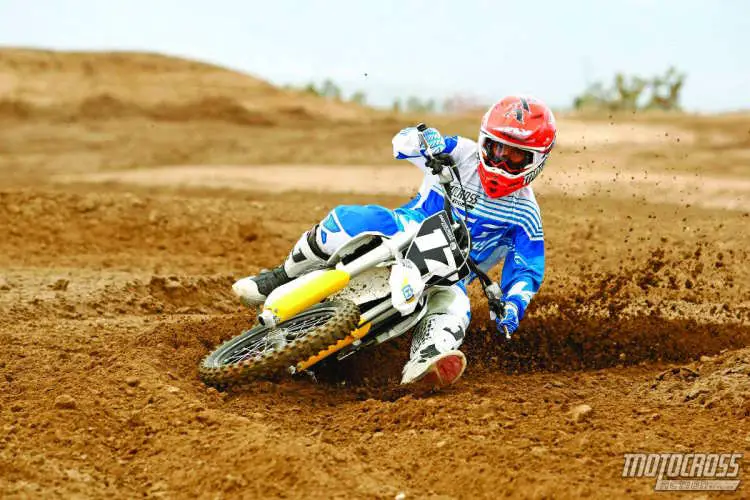
The Husqvarna TC85 is the newest mini on the market, but that is more of a parlor trick than innovative design work. The Husqvarna TC85 is based on the KTM 85SX.
WHAT WAS GOOD? Testers raved about the broad and easy-to-use powerband. At 25.36 horsepower, the TC85 has the credentials. Power and power alone supersedes every other aspect in 85cc racing, and the Husqvarna TC85 powerplant is a winner. That, coupled with a sleek and narrow frame, equated to a positive feel in corners and through the air. Most riders were relatively pleased with the WP suspension, though it was slightly unbalanced for faster testers. The hydraulic clutch was a hit. An 85cc two-stroke requires a deft left hand in order to keep the power from dropping off the pipe. The Formula hydraulic clutch delivered without fail.
WHAT WAS BAD? Faster testers didn’t share the same confidence in the WP suspension’s handling of rough sections as our slower and shorter riders. We noticed that the jetting was also a bit lean for our sea-level SoCal tracks. And, at 33.66 inches, the seat height was a bit intimidating for those under 5 feet tall. The TC85 is also the most expensive bike in the class ($5399).
WHAT’S THE FINAL WORD? Husqvarna, by way of KTM, ascended to the top of the 85cc two-stroke heap in the sneakiest of ways. Let it be known that the Husqvarna TC85 is essentially the KTM 85SX, aside from the plastics and white frame. Now you might rightfully ask how the Husqvarna could surpass KTM’s offering despite the fact that the TC85 is a clone of the 85SX? Our testers felt that the Husky WP shock performed better than KTM’s unit. They noticed several subtle differences between the bikes—enough changes that they proclaimed the Husqvarna TC85 the best in the shootout.
THE OSCARS VERSION OF MXA’S 85cc SHOOTOUT
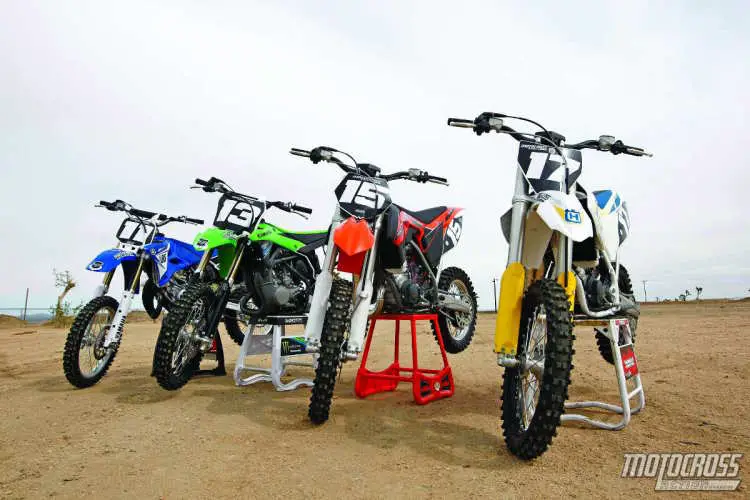
As with every shootout there are winners and losers. That’s life. Yet, it doesn’t have to be so harsh. As we previously mentioned, each 85cc has its advantages. That’s why MXA ranked the bikes in a variety of categories. It’s a question of determining what areas matter most to you.
WHICH BIKE HAS THE BEST POWERBAND?
1. Husqvarna TC85
2. KTM 85SX
3. Kawasaki KX85
4. Yamaha YZ85
WHICH BIKE HAS THE BROADEST POWERBAND?
1. Husqvarna TC85
2. KTM 85SX
3. Kawasaki KX85
4. Yamaha YZ85
WHICH BIKE SHIFTS EASIEST?
1. Husqvarna TC85
2. KTM 85SX
3. Kawasaki KX85
4. Yamaha YZ85
WHICH BIKE HANDLES THE BEST?
1. Kawasaki KX85
2. Husqvarna TC85
3. KTM 85SX
4. Yamaha YZ85
WHICH BIKE HAS THE BEST SUSPENSION?
1. Kawasaki KX85
2. Husqvarna TC85
3. KTM 85SX
4. Yamaha YZ85
WHICH BIKE HAS THE BEST CLUTCH?
1. KTM 85SX
2. Husqvarna TC85
3. Kawasaki KX85
4. Yamaha YZ85
WHICH BIKE HAS THE MOST USABLE BRAKES?
1. Kawasaki KX85
2. KTM 85SX
3. Husqvarna TC85
4. Yamaha YZ85
WHICH BIKE HAS THE BEST JETTING?
1. Kawasaki KX85
2. Yamaha YZ85
3. KTM 85SX
4. Husqvarna TC85
WHICH BIKE HAS THE BEST ERGONOMICS?
1. Kawasaki KX85
2. KTM 85SX
3. Husqvarna TC85
4. Yamaha YZ85
WHICH BIKE WAS MOST COMFORTABLE IN THE AIR?
1. Husqvarna TC85
2. KTM 85SX
3. Kawasaki KX85
4. Yamaha YZ85
WHICH BIKE DID THE MXA TEST RIDERS PREFER?
1. Husqvarna TC85
2. KTM 85SX
3. Kawasaki KX85
4. Yamaha YZ85


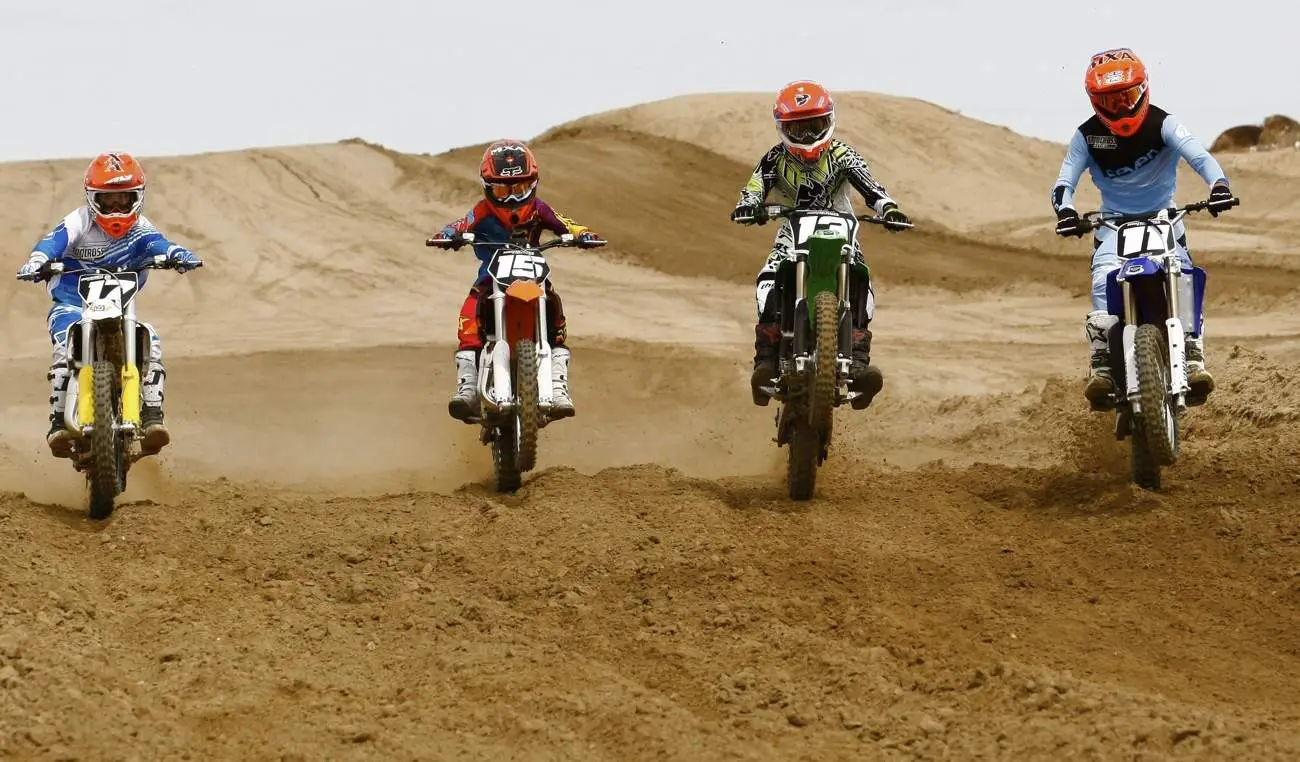




Comments are closed.